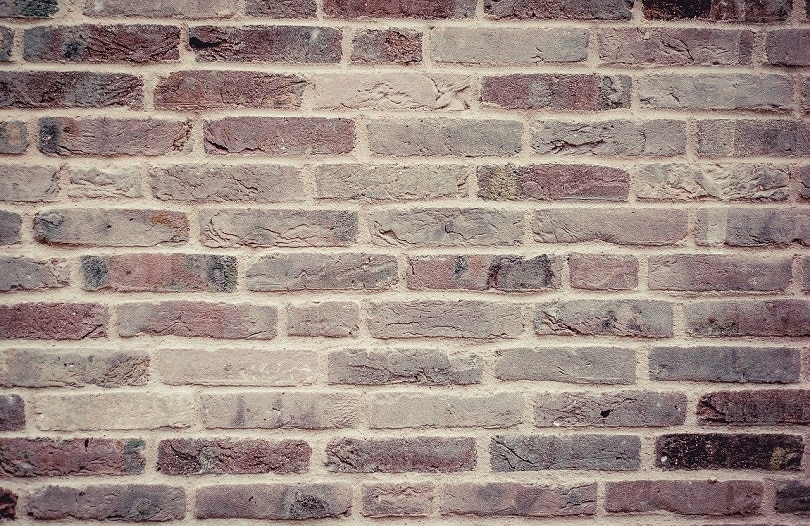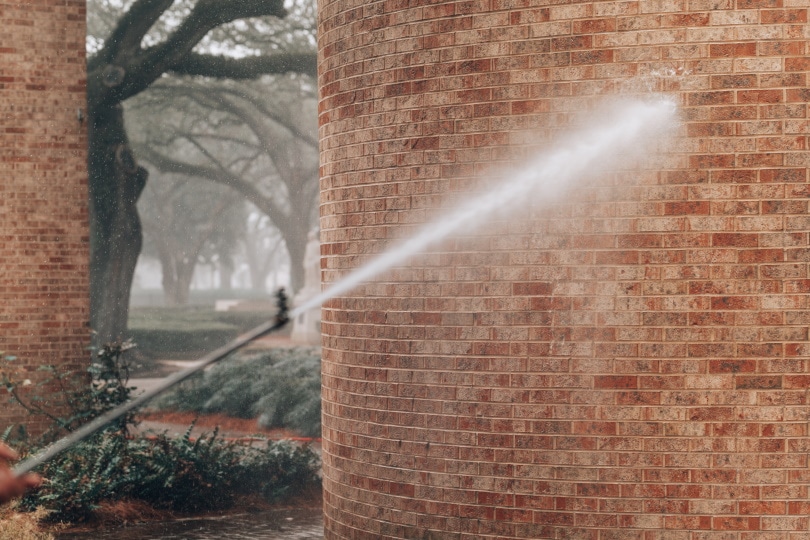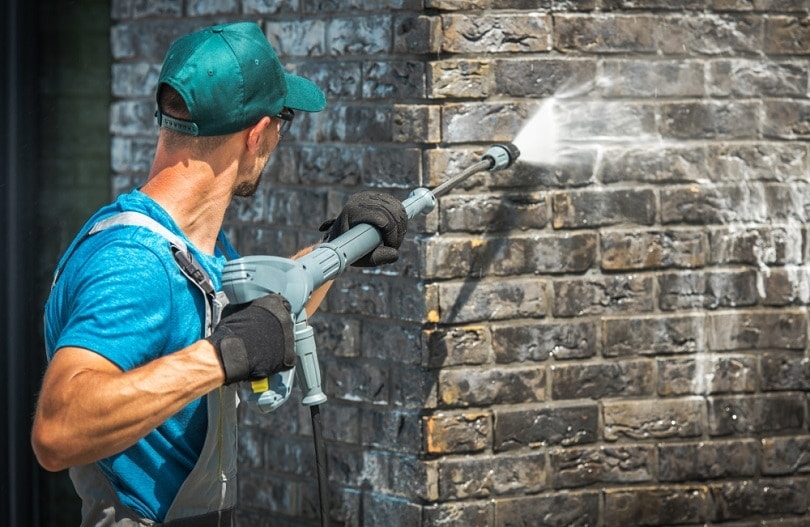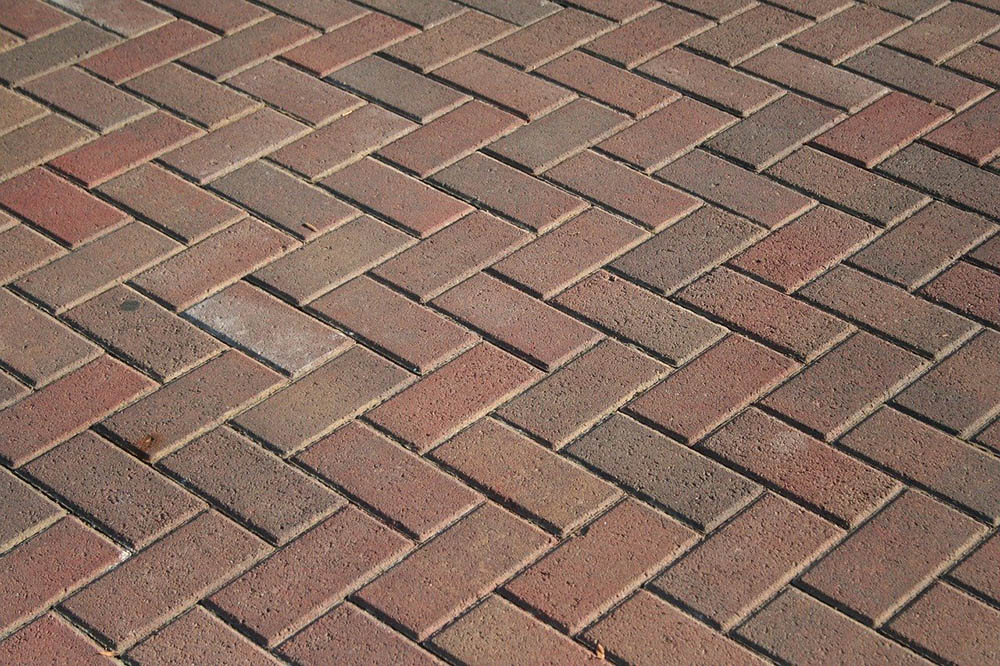Can You Power Wash Bricks? Facts, Tips, & FAQ
-
Melissa Gunter
- Last updated:

Power washing is a great way to remove dirt and grime from most surfaces. This tool is especially helpful for homeowners as it can help clean your home, your patios, decks, and even outdoor furniture. One question that many ask when it comes to using a power washer around the house is whether you can power wash bricks.
Bricks are commonly used to not only build homes but also to build patios and other structures. This makes this material a prime target for power wash cleaning. In most instances, power-washing bricks can leave things around the house looking cleaner but there is a catch. If you decide to power wash the bricks around your house, there are instances where it may not go as planned.
Let’s take a look at whether you can power wash your home’s bricks, how to do it properly, and what disadvantages it may cause.
Is Power Washing Brick Safe?
In most situations, the answer to this question is yes, but there are a few catches. Brick is a porous material. This means it isn’t waterproof. This may leave you wondering how brick homes aren’t constantly leaking or showing signs of water damage. The answer is the sealant. When a brick home is built, a sealant is applied to help protect the bricks. To keep your home or other structures made of brick on your property looking good, it’s best to reapply sealant every few years. This is especially true for older homes where sealant may not have been used or reapplied in quite some time.

What Happens If I Damage My Bricks?
Being a porous material means bricks may take in the water used during a power washing session. When too much water pressure is used, the water can travel through the small holes in your bricks and make it to the interior of the home. Damage to bricks may not be noticeable instantly. Often, this process takes several years. Eventually, you could start seeing cracks in your bricks, damaged grout, or even notice that it is crumbling. Unfortunately, once this deterioration process starts, it can’t be stopped. Your only choice will be to replace the damaged bricks.
Fortunately, newer brick structures have a better chance of standing up against power washing. Age hasn’t had a chance to come into play and your sealants are still in good shape. If you aren’t sure how old your bricks are, you should find out before pulling out your power washer. This will help you determine whether it is safe to wash these surfaces and how long it could have been since the sealant was applied.
Tips for Safely Power Washing Bricks
Bricks can get dirty. They show signs of algae, dirt, and other unsavory particles. When it comes time to pull out the power washer and get the job done, there are a few tips you can keep in mind that can help you avoid unwanted damage. Here are a few that can make the process easier, be safer for your property, and leave your structure looking great.
Use the Right Amount of Pressure
Pulling out your power washer and going full force on your bricks isn’t the way to go. Too much power can definitely leave your bricks in dire straights. Instead of using your machine’s strongest settings, which could produce a dangerous PSI (pounds per square inch) of pressure for your bricks, work with the lower settings. This allows your cleaner to do the majority of the work and keeps your bricks safer.
Choose Your Detergent Wisely
With the porous nature of brick, the detergent you use when cleaning can find its way into the small holes and remain there if not properly rinsed away. This can be an issue as some cleaners can eat away at the stability of your bricks from the inside. Instead of using dangerous cleaners like muriatic acid or ammonia, stick with gentler, non-acidic detergents to get the job done.

Distance is Key
Don’t think that using your power washer on the lower settings means you need to be closer to your bricks when cleaning. Distancing your power washer from the surface of your bricks will help maintain their integrity. This also helps you avoid potential injury from bits and pieces that may fly loose while you’re pressure washing. In most cases, a distance of 12-inches is your best bet.
Use a Pattern
Maintaining a consistent pattern can also help protect your bricks when using a power washer. Start at the top and move horizontally across the surface, but don’t linger too long on one spot to avoid water logging your bricks. Then work your way downward. This keeps clean bricks from receiving dirt and debris from the bricks above while also keeping the amount of water used to a minimum.
Avoid Wire Brushes and Dangerous Tools
When bricks are stained you may want to grab a wire brush or power tool with a cleaning disc to scrub away the grime. This can be dangerous when it comes to bricks or other types of masonry surfaces. These harsh tools can strip away the protective seals and leave your bricks more vulnerable to damage in the long run.
Ask a Professional
If you don’t feel comfortable power washing the bricks around your home, then don’t do it. There are professional power washing services out there who will come do the job for you. This is especially helpful if you aren’t confident in the age or integrity of your bricks. A professional can determine whether power washing is the right avenue to take.

- Related Read: How to Paint Brick in 4 Easy Steps
Final Thoughts
As you can see, power washing the bricks around your property can be done safely when the proper guidelines are followed. If you have a power washer in the garage and feel your bricks could use some sprucing up, by all means, rise to the challenge. Keep in mind, anytime you take on a DIY project, there are ways to do it correctly. There are also avenues you can take that will leave your property suffering in the long run. Follow these tips and understand the materials you’re working with, and you’ll leave your home looking amazing.
Featured Image Credit: Nikiko, Pixabay
Contents
